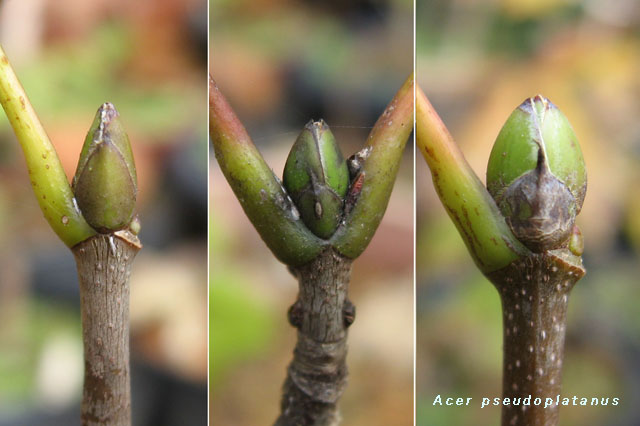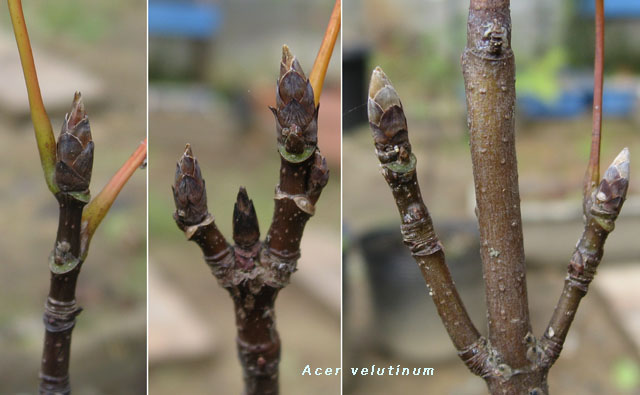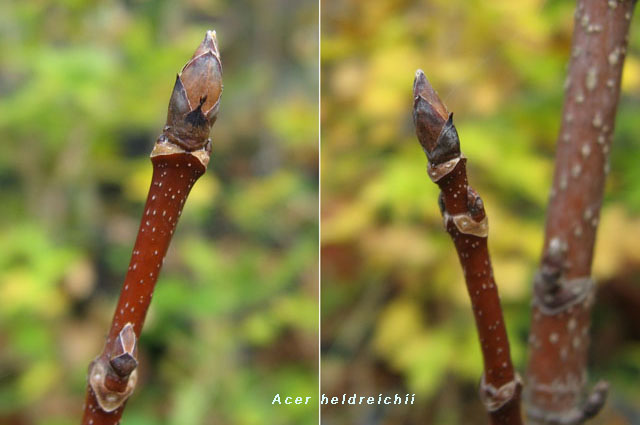How to distinguish Sycamore maple and its companions
I had received the question by mail several times about how to distinguish European maple-species before. But I could not have answered well for the question. In a sense, how to distinguish between the following three kinds of maples from Europe seems to me similar to how to distinguish between those maples such as Iroha-momiji, Yama-momiji and Oh-momiji from Japan. The following three kinds of maples have not only a natural species but also their crossbreed and their cultivars for a long time in the history of cultivation in Europe as well as in Japan. It is not an easy theme for us to judge.
I referred to the following text, and observed young trees, and I tried to put it together as follows.
ANTONIE LE HARDY DE BEAULIUUFuMAPLESv, Timber Press
"Maples of the World" by D.M. van Gelderen
Common Name |
Sycamore maple Great maple |
Velvet maple |
Balkan maple Greek maple |
Scientific name |
Acer pseudoplatanus |
Acer veltinum |
Acer heldreichii |
Appearance |
25-35m |
25m |
25m, straight trunk broadly spreading, domelike branching |
Trunk & bark |
gray bark peels off |
light gray, smooth |
smooth, but vertically striped on older tree |
Branches |
brown or greenish, glabrous |
gray brown, strong, young twigsreddish green & glabrous |
brownish, current twigs lighter brown |
Buds |
large, ovoid, 8-10mm in diameter with overlapping yellow-green, dark brown-bordered scales |
Thick, overlapping scales, The scales at the tip of branch with whitish gray down |
red to dark brown, very pointed |
Leaves |
5 lobed, dark green above, gray green to light purple below with more down |
3 or 5 lobed, large, dark green covered below with velvet-thick light brown down, rib also brown hairs at the base fall color yellow |
5 lobed, glabrous on both sides, but small hairs on the upper side at the base brownish down along the main vein below deeply cleft leaves with very close lobes |
Petiole |
greenish yellow or reddish covered with brownish hair |
long up to 40 cm downward |
yellow up to 20 cm |
Flowers |
greenish yellow, |
yellowish green, in erect corymbs, at the end of branches, 8-12 cm |
yellow, in short & broad upright umbels |
Fruits |
thick & round |
wings downy, forming an angle of 90-120 degrees |
with an angle of 60 degrees |
Distribution |
Central & southern Europe |
Caucasus |
Balkan states & Greece |
First of all, I will show you their buds in winter.



The images will be added one by one.